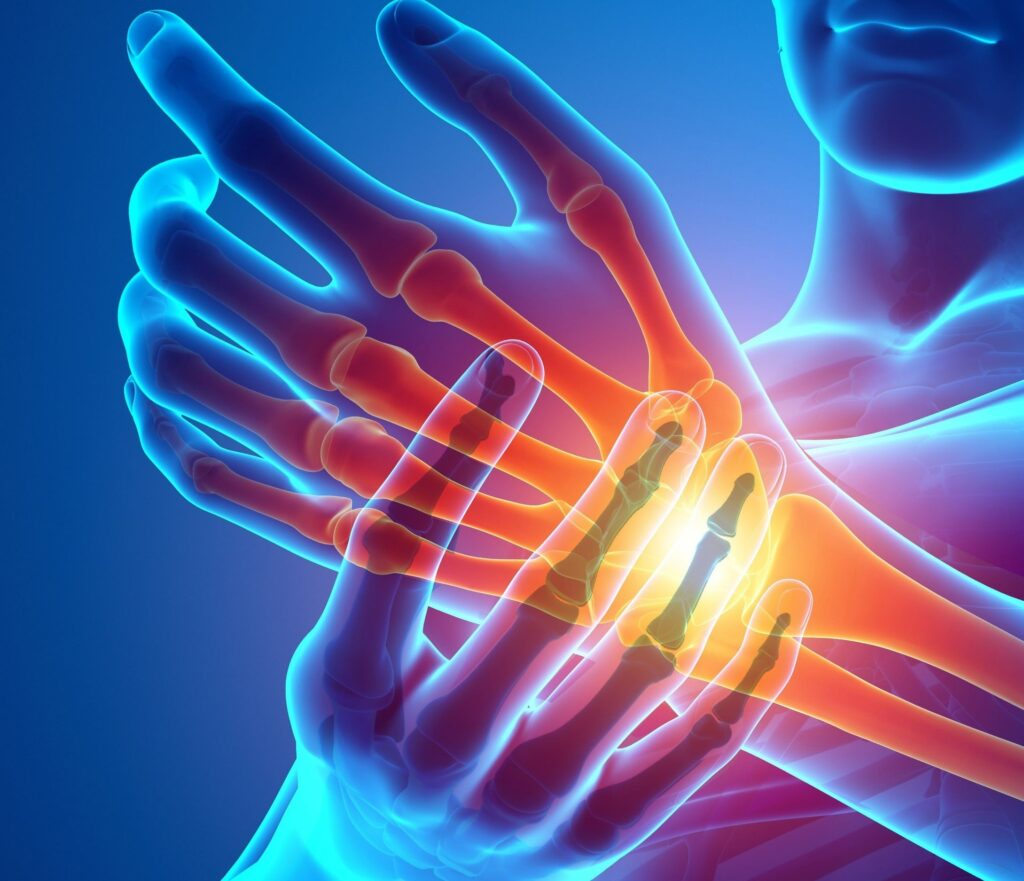Complex Regional Pain Syndrome, abbreviated as CRPS, is a chronic and often perplexing condition characterized by severe and disproportionate pain, typically affecting a limb but sometimes spreading to other parts of the body. This disorder presents a complex interplay of sensory, motor, and autonomic dysfunctions, making it challenging to diagnose and manage effectively.
Types of CRPS:
CRPS is classified into two types:
CRPS Type 1 (CRPS-I): Formerly known as Reflex Sympathetic Dystrophy (RSD), this type occurs without confirmed nerve injury and typically follows a triggering event like trauma, surgery, or an immobilized limb.
CRPS Type 2 (CRPS-II): Previously called Causalgia, CRPS-II is characterized by confirmed nerve injury. It often emerges after a major nerve injury, such as fracture or surgery.
Signs and Symptoms:
CRPS symptoms manifest along a spectrum, but commonly include:
- Pain: Intense, persistent, and disproportionate pain, often described as burning, throbbing, or stabbing.
- Swelling: The affected limb may exhibit swelling and changes in skin temperature and color.
- Sensory Changes: Altered sensation, such as increased sensitivity to touch, temperature, or even a light breeze.
- Motor Dysfunction: Weakness, tremors, and difficulty moving the affected limb due to muscle atrophy and spasms.
- Autonomic Disturbances: Changes in skin color, temperature, and excessive sweating or dryness in the affected area.
Causes and Triggers:
The exact cause of CRPS remains elusive, though it's believed to involve a complex interplay of neurological, inflammatory, and vascular factors. Common triggers include trauma, fractures, surgery, and even minor injuries.
Diagnosis and Assessment:
Diagnosing CRPS is challenging due to its variable presentation and lack of definitive tests. Healthcare professionals rely on clinical observation, patient history, and the Budapest Criteria—a set of diagnostic criteria—to identify the condition.
Treatment and Management:
CRPS management is multifaceted and typically involves a combination of approaches:
- Pain Management: Medications like NSAIDs, opioids, anticonvulsants, and antidepressants may be prescribed.
- Physical Therapy: Gentle exercises and desensitization techniques help prevent muscle atrophy and improve mobility.
- Sympathetic Nerve Block: Injecting anesthetic agents near sympathetic nerves might alleviate pain.
- Psychological Support: Coping strategies, relaxation techniques, and therapy can help manage the emotional toll of CRPS.
- Spinal Cord Stimulation: Implanting a device to deliver electrical pulses to the spinal cord can alleviate pain.
- Counseling: Education about CRPS, self-care strategies, and emotional support can aid in managing the condition.
Prognosis:
Early diagnosis and intervention improve the chances of better outcomes. Some individuals experience spontaneous remission, while others face long-term challenges. An individualized treatment plan considering physical, psychological, and emotional aspects enhances the quality of life for CRPS patients.
Conclusion:
CRPS remains a complex puzzle within the realm of chronic pain disorders. A comprehensive approach involving pain management, physical therapy, psychological support, and tailored interventions can offer relief and improved functionality for those living with this challenging condition.


